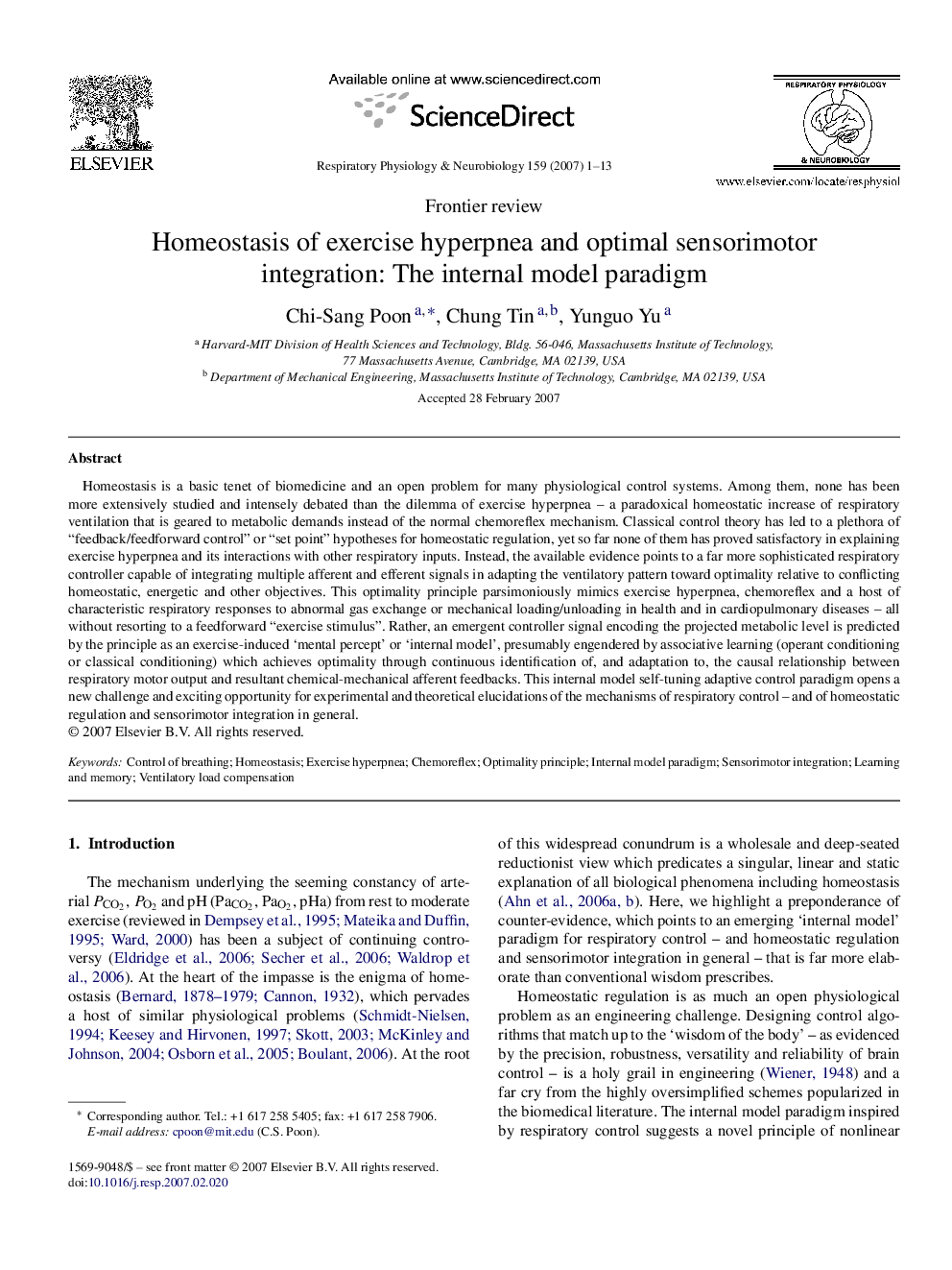| کد مقاله | کد نشریه | سال انتشار | مقاله انگلیسی | نسخه تمام متن |
|---|---|---|---|---|
| 2848290 | 1167416 | 2007 | 13 صفحه PDF | دانلود رایگان |

Homeostasis is a basic tenet of biomedicine and an open problem for many physiological control systems. Among them, none has been more extensively studied and intensely debated than the dilemma of exercise hyperpnea – a paradoxical homeostatic increase of respiratory ventilation that is geared to metabolic demands instead of the normal chemoreflex mechanism. Classical control theory has led to a plethora of “feedback/feedforward control” or “set point” hypotheses for homeostatic regulation, yet so far none of them has proved satisfactory in explaining exercise hyperpnea and its interactions with other respiratory inputs. Instead, the available evidence points to a far more sophisticated respiratory controller capable of integrating multiple afferent and efferent signals in adapting the ventilatory pattern toward optimality relative to conflicting homeostatic, energetic and other objectives. This optimality principle parsimoniously mimics exercise hyperpnea, chemoreflex and a host of characteristic respiratory responses to abnormal gas exchange or mechanical loading/unloading in health and in cardiopulmonary diseases – all without resorting to a feedforward “exercise stimulus”. Rather, an emergent controller signal encoding the projected metabolic level is predicted by the principle as an exercise-induced ‘mental percept’ or ‘internal model’, presumably engendered by associative learning (operant conditioning or classical conditioning) which achieves optimality through continuous identification of, and adaptation to, the causal relationship between respiratory motor output and resultant chemical-mechanical afferent feedbacks. This internal model self-tuning adaptive control paradigm opens a new challenge and exciting opportunity for experimental and theoretical elucidations of the mechanisms of respiratory control – and of homeostatic regulation and sensorimotor integration in general.
Journal: Respiratory Physiology & Neurobiology - Volume 159, Issue 1, 15 October 2007, Pages 1–13